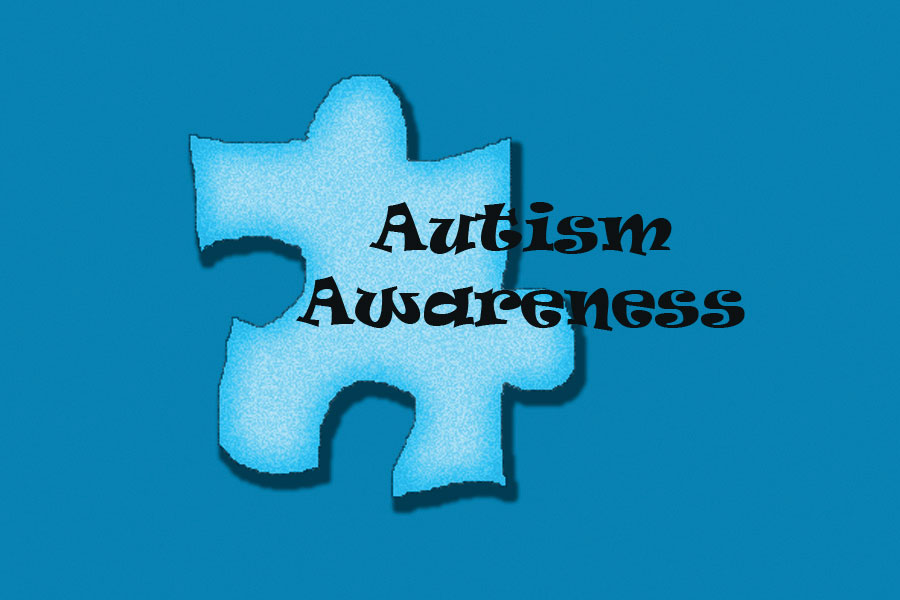Shoppers have scratched their heads at Home Depot’s sale of blue light bulbs, Americans have found themselves questioning what the emblem of a single puzzle piece signifies, and Facebook users have wondered why their friends chose to color their profile pictures blue—the answer is autism awareness.
Today, the quest for tolerance is pursued by advocacy organizations such as Autism Speaks, which is behind the annual “Light it up Blue” campaign. The campaign encourages advocates to purchase their special blue light bulbs, the official color of autism awareness. A portion of the proceeds go to Autism Speaks and other causes that will benefit those living with the disorder.
Some advocates wear puzzle pieces, the symbol of the autism community, on their jewelry or clothing. Others manipulate their Facebook profile pictures to a bluer hue, or volunteer with certain organizations. Each action shows support of the autism community and opens the door to discussion with a society that is still rather in the dark about autism.
“The stigma [associated with mental disorders] arises primarily from fear and a lack of knowledge,” said Dr. Elizabeth Stroot, division chair of social sciences and associate professor of psychology. “Another cause of stigma is the notion that people with mental disorders are different than the rest of us, when really they are frequently not categorically different from us… Mental illness is so pervasive that it will affect nearly all of us, either through our own struggles or through the struggles of a loved one.
“If a family with a child who has a severe form of autism is in public and that child, who outwardly appears no different than other children, begins to act in an unusual fashion, observers often rush to judgment and think, ‘I’d never let my child act that way in public.’ Those types of [judgments] are intolerant and uninformed and are perpetuated by a lack of education and compassion.”
According to Stroot, those with less severe autism frequently have challenges that involve their perceptions and ability to respond in social situations. As a result, their responses may be misunderstood and, during school years, these children are at an increased risk for being bullied.
“The key to interacting with others who have autism spectrum disorder, or any other [disorder], is communication and openness, as well as compassion and tolerance for differences,” Stroot said.
Heather Berry, sophomore criminal justice and English major, has worked with children who have autism while administering therapeutic riding sessions at a stable called Bunker Park through a program called Stable Pathways in Minnesota.
“Working with them was the best experience in my life,” Berry said. “It was an experience in which I was obviously changing their lives, but more obviously they were changing mine.
“The best way to communicate with [children who have autism] is to treat them as if they were your own sibling. Not baby them, though. You have to be stern, but equally gentle.”
Berry utilizes the example of her interaction with James, a little boy with autism and who enjoyed his riding sessions. James was in the process of breaking a habit in which he made constant motorboat noises.
“We started by being gentle with him, asking him nicely to be quiet. We eventually had to be sterner by taking things away from him,” Berry said. “[We explained that] he wouldn’t be able to urge the horse on if he didn’t stop making the sound.”
Lakeland College’s tie to the autism community goes far deeper than Berry’s work. Many students and faculty on campus volunteer and work with those who have the disorder. What’s more, many people on campus have friends or relatives diagnosed with autism. As Stroot said, the disorder is so widespread that likely every person will be eventually be touched by it. Thus, it is in everyone’s best interest to stay informed and involved in the autism community.



http://cheaplifeinsurancetermquotes.com/ • May 2, 2013 at 2:00 am
Greetings from California! I’m bored to tears at work so I decided to browse your website on my iphone during lunch break. I love the information you present here and can’t wait to take
a look when I get home. I’m surprised at how quick your blog loaded on my phone .. I’m not even using WIFI,
just 3G .. Anyways, fantastic site!